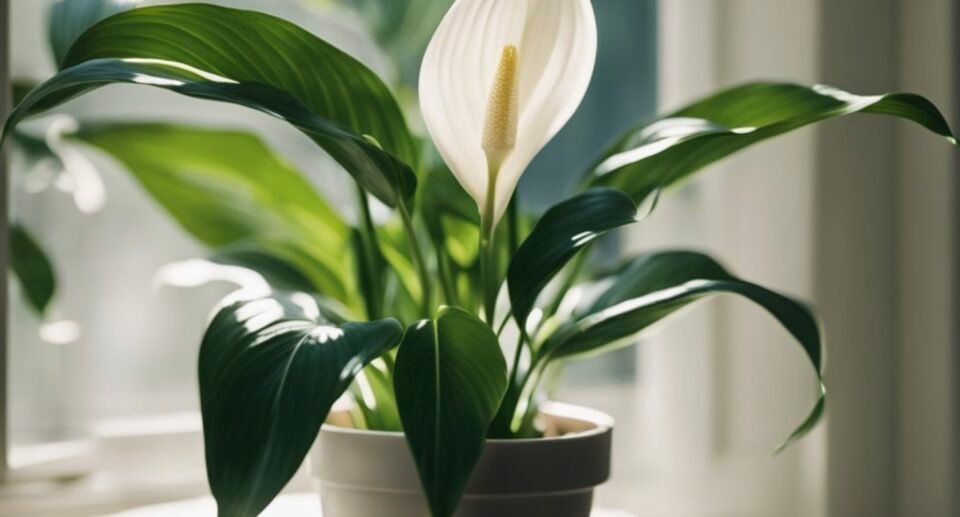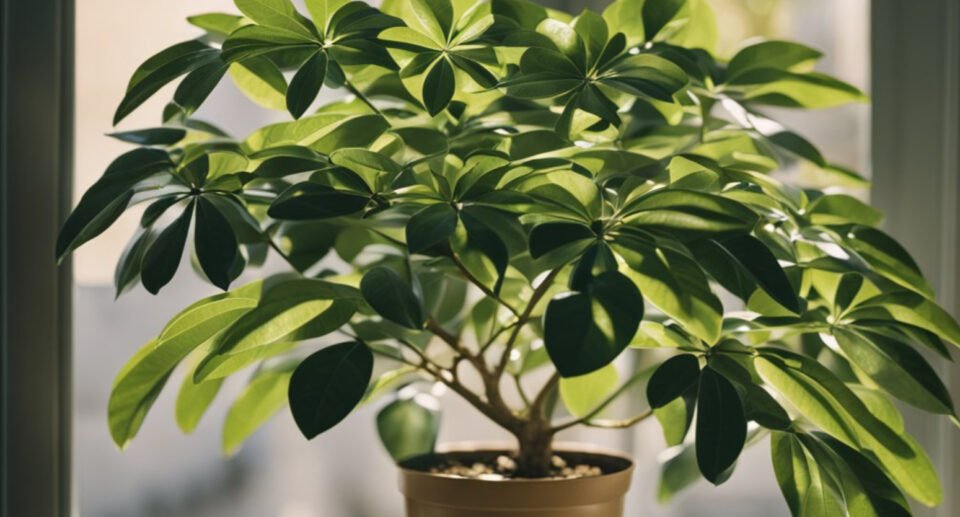The Ultimate Guide to East Facing Window Plants

East-facing windows are a great source of natural light for indoor plants. However, not all plants thrive in such conditions. Finding the right plant for an east-facing window can be a challenge, but with the right knowledge, it’s easy to create a beautiful garden.
When it comes to selecting plants for an east-facing window, it is important to consider the amount of natural light that the plants will receive.
Plants that require full sun may not be the best choice for an east-facing window, as they may not receive enough light to thrive. Instead, it is best to choose plants that can tolerate lower light levels, such as ferns, ivies, and peace lilies.
There are many different types of plants that can thrive in an east-facing window. With the right care and attention, they can provide a beautiful and natural touch to any indoor space.
By selecting the right plants and providing them with the right amount of light and water, it is possible to create a lush and vibrant indoor garden that will thrive for years to co
Selecting Plants for East-Facing Windows
When selecting plants for east-facing windows, it is important to consider the light requirements of different plants.
Not all plants thrive in the same lighting conditions, so you need to choose plants that can thrive in the filtered sunlight and bright indirect light that is typically found in an east-facing window.
Understanding Light Requirements
Plants have different light requirements, and it is important to choose plants that can thrive in the lighting conditions of your home.
For east-facing windows, you should choose plants that can tolerate bright, indirect light. Plants that require full sun may not thrive in an east-facing window, as they may not receive enough direct sunlight.
Benefits of East-Facing Exposure
East-facing windows provide filtered sunlight and bright indirect light, which can be beneficial for many houseplants.
Plants that thrive in these lighting conditions can grow lush and healthy, and may even produce more blooms and foliage than they would in other lighting conditions.
Some of the best plants for east-facing windows include:
- Angel Wing Begonia
- Dumb Cane
- Moses in the Cradle
- Peace Lily
- Spider Plant
By choosing plants that can thrive in the lighting conditions of your home, you can create a beautiful and healthy indoor garden in your east-facing window.
Top Plant Recommendations
When it comes to finding the best plants for an east-facing window, there are plenty of options to choose from. Here are some of the top plant recommendations that can thrive in an east-facing window.
Foliage Favorites
Foliage plants are a great option for an east-facing window as they can tolerate lower light levels. Here are some foliage favorites that can add a touch of greenery to your space:
- Fiddle Leaf Fig: This popular plant is known for its large, violin-shaped leaves and can grow up to 10 feet tall. It needs bright, indirect light and consistent watering to thrive.
- Schefflera: Also known as the umbrella tree, this plant has glossy, green leaves that can grow up to 12 inches long. It can tolerate lower light levels and prefers moist soil.
- Philodendron: With its heart-shaped leaves, this plant is a great option for an east-facing window. It can tolerate lower light levels and prefers well-draining soil.
- Swiss Cheese Plant: This plant gets its name from the unique holes in its leaves. It can tolerate lower light levels and prefers well-draining soil.
Flowering Beauties
If you want to add some color to your east-facing window, flowering plants are a great option. Here are some flowering beauties that can thrive in an east-facing window:
- Orchids: These delicate flowers come in a variety of colors and can add a touch of elegance to any space. They prefer bright, indirect light and well-draining soil.
- Jade Plant: This succulent has small, pink or white flowers that bloom in the winter. It can tolerate lower light levels and prefers well-draining soil.
- Hoya Plant: Also known as the wax plant, this plant has clusters of fragrant, star-shaped flowers that can bloom for months. It prefers bright, indirect light and well-draining soil.
- Peace Lily: This plant has beautiful white flowers that can bloom year-round. It can tolerate lower light levels and prefers moist soil.
Other plants that can thrive in an east-facing window include the snake plant, areca palm, Chinese money plant, dracaena, and ficus elastica. It’s important to note that while these plants can tolerate lower light levels, they still need some natural light to thrive.
Care and Maintenance
Watering and Humidity
When it comes to watering and humidity, different plants have different needs. However, as a general rule of thumb, most east-facing window plants prefer to be kept consistently moist, but not waterlogged.
This means that you should water them regularly, but be careful not to let the soil dry out completely between waterings.
In terms of humidity, many tropical plants thrive in high humidity environments.
If you live in a dry climate or your home has low humidity, you may want to consider using a room humidifier to help increase the moisture levels around your plants.
Alternatively, you can mist your plants with water a few times a week to help keep their leaves moist.
Soil and Fertilization
Choosing the right potting mix is key to ensuring that your east-facing window plants stay healthy and happy. Most plants prefer a well-draining soil mix that allows for adequate air circulation around the roots.
Additionally, many plants benefit from light fertilization every few months to help provide them with the nutrients they need to thrive.
Common Pests and Diseases
Unfortunately, even the healthiest plants can fall victim to pests and diseases.
Some common pests that may affect your east-facing window plants include aphids, spider mites, and mealybugs.
To prevent infestations, make sure to keep your plants clean and free of debris, and inspect them regularly for signs of pests.
If you do notice pests on your plants, there are a variety of natural and chemical treatments you can use to get rid of them.
For example, you can use neem oil, insecticidal soap, or a mixture of water and dish soap to help control aphids and other pests.
In terms of diseases, some common issues that may affect your plants include leaf drop and brown spots.
To prevent these issues, make sure to provide your plants with adequate light and water, and avoid over-fertilizing or over-watering them.
If you do notice signs of disease on your plants, it’s important to act quickly to prevent the spread of the issue.
Design and Placement Ideas
Creating a Lush Window Garden
A well-designed window garden can transform a room, adding color, texture, and life to your living space.
When planting an east-facing window, make sure to choose plants that thrive in bright, indirect light. Tropical plants, such as dumb cane and orchids, are ideal for this location, as they require a warm, humid environment.
To create a lush, layered look, consider planting a mix of tall and short plants.
For example, a tall, leafy palm can provide a dramatic focal point, while smaller, flowering plants, such as the flaming Katy, can add pops of color and texture.
Grouping plants together in pots or planters can also create a cohesive, natural look.
When designing your window garden, make sure to consider the overall aesthetic of your room.
If your decor is modern and minimalist, for example, you may want to choose plants with clean lines and simple shapes.
On the other hand, if your style is more eclectic, you might opt for plants with bold, colorful foliage.
Complementary Plants for Grouping
Grouping plants together can create a beautiful, dynamic display in your window garden.
When selecting complementary plants, consider factors such as color, texture, and shape.
For example, pairing a tall, spiky plant, such as a snake plant, with a trailing, vine-like plant, such as a pothos, can create a striking contrast.
When grouping plants, make sure to consider their individual needs for light, water, and air circulation.
Plants that require similar conditions can be grouped together, while those with different needs should be placed in separate pots.
Some complementary plants for an east-facing window include:
- Prayer plants: These plants have striking, patterned leaves that fold up at night, giving them their name. They prefer slightly moist soil and indirect light.
- Flowering plants: Adding a few flowering plants, such as the angel wing begonia, can add a pop of color to your window garden. These plants prefer bright, indirect light and room temperatures.
- South-facing and west-facing window plants: If you have windows that face south or west, you can also incorporate plants that require more direct sunlight, such as succulents or cacti. These plants can be placed on a sheltered porch or in a sunny room.
- Air-purifying plants: Many plants, such as the snake plant and peace lily, are known for their air-purifying properties. These plants can help improve the air quality in your home, and they also prefer bright, indirect light.
Conclusion
In conclusion, there are a variety of plants that can thrive in an east-facing window. Some of the best options include the Peace Lily, Spider Plant, Flaming Katy, Dumb Cane, and Dieffenbachia.
It’s important to consider the specific lighting and humidity needs of each plant when selecting the right one for your space.
For those looking for low-maintenance options, the Spider Plant and Peace Lily are great choices. These plants require minimal watering and can tolerate a range of lighting conditions.
On the other hand, the Flaming Katy and Dieffenbachia require more attention to thrive. These plants need bright, indirect light and consistent watering. However, they can be a beautiful addition to any indoor garden.
Overall, it’s important to do your research and select plants that will thrive in your specific environment. With the right care and attention, any of these plants can add life and beauty to your east-facing window.

Hello, I’m Keith Jones. I’m the author and head of content here of door and window guide. I’ve been in the window and door industry for over 10 years in the UK and North America. I’ve had quite a few roles during my career mainly in Worldwide sales. I’m now semi retired so I thought I’d put my knowledge to good use educating people about all they might need to know about door and window related topics.





